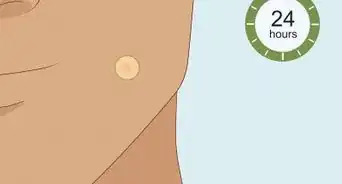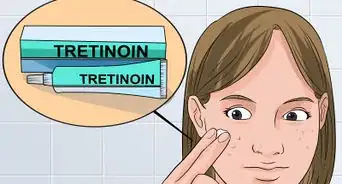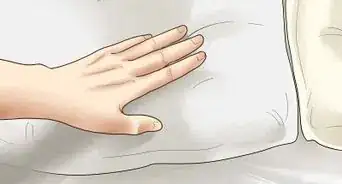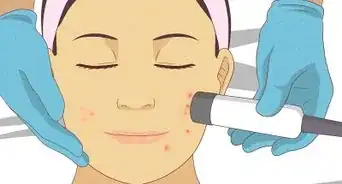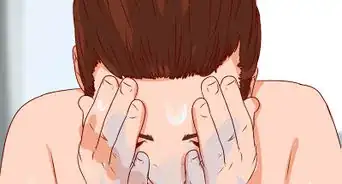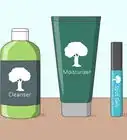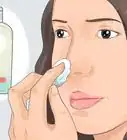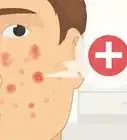This article was co-authored by Laura Marusinec, MD. Dr. Marusinec is a board certified Pediatrician at the Children's Hospital of Wisconsin, where she is on the Clinical Practice Council. She received her M.D. from the Medical College of Wisconsin School of Medicine in 1995 and completed her residency at the Medical College of Wisconsin in Pediatrics in 1998. She is a member of the American Medical Writers Association and the Society for Pediatric Urgent Care.
wikiHow marks an article as reader-approved once it receives enough positive feedback. In this case, 100% of readers who voted found the article helpful, earning it our reader-approved status.
This article has been viewed 432,374 times.
Pimples occur when hair follicles and skin pores become clogged with oil and dead skin, forming a plug. This plug creates an ideal environment for bacteria to grow, producing a large, red, sore pimple. Fucidin is an antibiotic cream that kills bacteria and can help your infected pimples heal faster, but when used incorrectly, it can irritate your skin. While Fucidin may help treat certain types of pimples, it is not specifically approved for the treatment of acne.
Steps
Applying Fucidin Correctly
-
1Wash the pimple with warm water and a soft washcloth. This will cleanse and open the pore.[1]
- Use mild, non-oily soaps to avoid irritating your skin.
- If the pimple is very swollen, applying warm water may cause it to break open and release a small amount of pus. If this occurs, continue washing gently until the pus is gone.
- Do not scrub. This will irritate the already inflamed skin.
-
2Dry your skin with a clean towel. This will make it easier to apply the medication only to the area you want.
- This is important because the cream can be an irritant if applied to areas where it is not needed.
Advertisement -
3Open the tube of Fucidin cream. Remove the cap and use the spike on the cap to break the seal.[2]
- If the tube is new, remove the cap and check to be sure that the seal is not broken before opening it yourself. If it is broken, return the tube and get a new one.
-
4Apply the cream to the infected pimple. The medication should be applied three to four times per day unless directed otherwise by your doctor.[3] Continue the treatment until the pimple heals.
- Rub the medication in with a clean finger or a sterile cotton swab.
- Use no more than a pea-sized amount and rub it into the skin until you can no longer see it.
- Wash your hands afterwards to prevent the medication from irritating the skin on your hands.
- Do not apply Fucidin to uninfected areas as it may cause irritation.
Knowing How to Handle Fucidin Cream Carefully
-
1Consult your doctor for advice before using it if you are pregnant or breastfeeding. Similarly, do not use it on a young child or infant without discussing it with your doctor first.[4]
-
2Use caution when applying Fucidin. Be sure to apply it only to the pimple.
- If you are applying the medication to your face, be careful not to get it in your eyes.
- Do not swallow the medication and keep it out of reach of small children.
- Do not apply it to mucous membranes such as your mouth or genitals.
-
3Be aware of the possible side effects. Side effects are uncommon, but if they do occur, discontinue the medication immediately and get medical help. Possible side effects include: [5]
- Irritation where it has been applied. Symptoms may include pain, burning, stinging, itching, redness, a rash, eczema, hives, swelling, blistering.
- Conjunctivitis.
- Topical application of Fucidin should not interfere with your ability to drive.
-
4Do not use Fucidin if you are allergic to it. Know what ingredients are contained in Fucidin. If you show symptoms of an allergic reaction (difficulty breathing, swelling of the face or throat, a rash/hives, etc.) seek medical help immediately.[6]
- 2% fusidic acid (active ingredient).
- Other ingredients include butylhydroxyanisole (E320), cetyl alcohol, glycerol, liquid paraffin, polysorbate 60, potassium sorbate, purified water, all-rac-α-tocopherol, hydrochloric acid, and white soft paraffin.
- In particular, butylhydroxyanisole (E320), cetyl alcohol, and potassium sorbate may cause an itchy rash or inflammation where applied. If you show these symptoms, discontinue the medication and consult your doctor.
Expert Q&A
Did you know you can get expert answers for this article?
Unlock expert answers by supporting wikiHow
-
QuestionHow do I know if my pimples are healing with the Fucidin cream?
 Laura Marusinec, MDDr. Marusinec is a board certified Pediatrician at the Children's Hospital of Wisconsin, where she is on the Clinical Practice Council. She received her M.D. from the Medical College of Wisconsin School of Medicine in 1995 and completed her residency at the Medical College of Wisconsin in Pediatrics in 1998. She is a member of the American Medical Writers Association and the Society for Pediatric Urgent Care.
Laura Marusinec, MDDr. Marusinec is a board certified Pediatrician at the Children's Hospital of Wisconsin, where she is on the Clinical Practice Council. She received her M.D. from the Medical College of Wisconsin School of Medicine in 1995 and completed her residency at the Medical College of Wisconsin in Pediatrics in 1998. She is a member of the American Medical Writers Association and the Society for Pediatric Urgent Care.
Board Certified Pediatrician
-
QuestionIs an expired tube of Fucidin harmful to use, or does it just not have the same results?
 Laura Marusinec, MDDr. Marusinec is a board certified Pediatrician at the Children's Hospital of Wisconsin, where she is on the Clinical Practice Council. She received her M.D. from the Medical College of Wisconsin School of Medicine in 1995 and completed her residency at the Medical College of Wisconsin in Pediatrics in 1998. She is a member of the American Medical Writers Association and the Society for Pediatric Urgent Care.
Laura Marusinec, MDDr. Marusinec is a board certified Pediatrician at the Children's Hospital of Wisconsin, where she is on the Clinical Practice Council. She received her M.D. from the Medical College of Wisconsin School of Medicine in 1995 and completed her residency at the Medical College of Wisconsin in Pediatrics in 1998. She is a member of the American Medical Writers Association and the Society for Pediatric Urgent Care.
Board Certified Pediatrician
-
QuestionI have used it for two months. My doctor told me the course is three months, but there has been no change in my acne. What should I do?
 Laura Marusinec, MDDr. Marusinec is a board certified Pediatrician at the Children's Hospital of Wisconsin, where she is on the Clinical Practice Council. She received her M.D. from the Medical College of Wisconsin School of Medicine in 1995 and completed her residency at the Medical College of Wisconsin in Pediatrics in 1998. She is a member of the American Medical Writers Association and the Society for Pediatric Urgent Care.
Laura Marusinec, MDDr. Marusinec is a board certified Pediatrician at the Children's Hospital of Wisconsin, where she is on the Clinical Practice Council. She received her M.D. from the Medical College of Wisconsin School of Medicine in 1995 and completed her residency at the Medical College of Wisconsin in Pediatrics in 1998. She is a member of the American Medical Writers Association and the Society for Pediatric Urgent Care.
Board Certified Pediatrician
Warnings
- Be aware that Fucidin is not intended to treat pimples. This is considered off label use. Talk to your doctor about using Fucidin in this way.⧼thumbs_response⧽
References
- ↑ http://www.mayoclinic.org/diseases-conditions/acne/basics/lifestyle-home-remedies/con-20020580
- ↑ http://www.medicines.org.uk/EMC/medicine/2966/XPIL/Fucidin+Cream/
- ↑ http://www.medicines.org.uk/EMC/medicine/2966/XPIL/Fucidin+Cream/
- ↑ http://www.medicines.org.uk/EMC/medicine/2966/XPIL/Fucidin+Cream/
- ↑ http://www.medicines.org.uk/EMC/medicine/2966/XPIL/Fucidin+Cream/
- ↑ http://www.medicines.org.uk/EMC/medicine/2966/XPIL/Fucidin+Cream/
About This Article
To treat a pimple with Fucidin, start by washing the pimple with warm water to clean the area and open up the pore. Then, dry your skin with a clean towel. Finally, rub a pea-sized amount of Fucidin into the pimple until you can't see the medication anymore. Repeat the process 3-4 times per day unless you've been told otherwise by your doctor. For more tips from our Medical co-author, like how to deal with side effects when using Fucidin, scroll down!
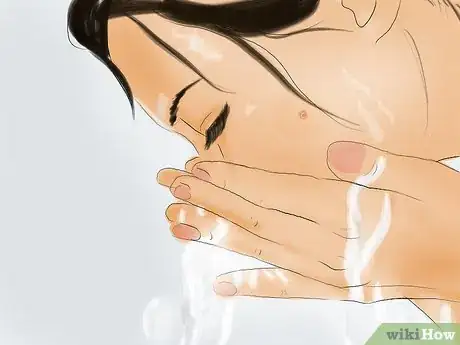




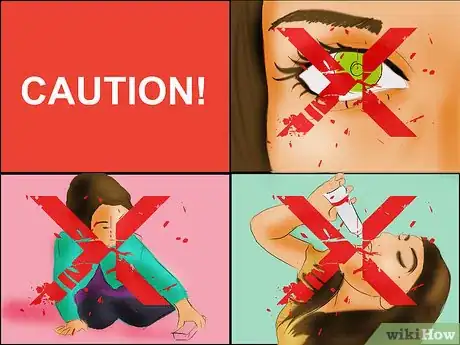



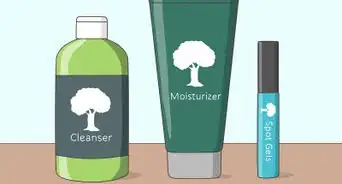
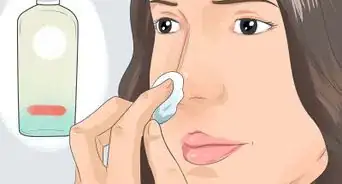
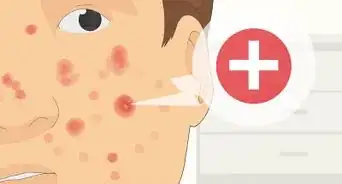
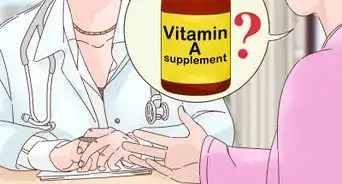
-Step-8-Version-2.webp)


